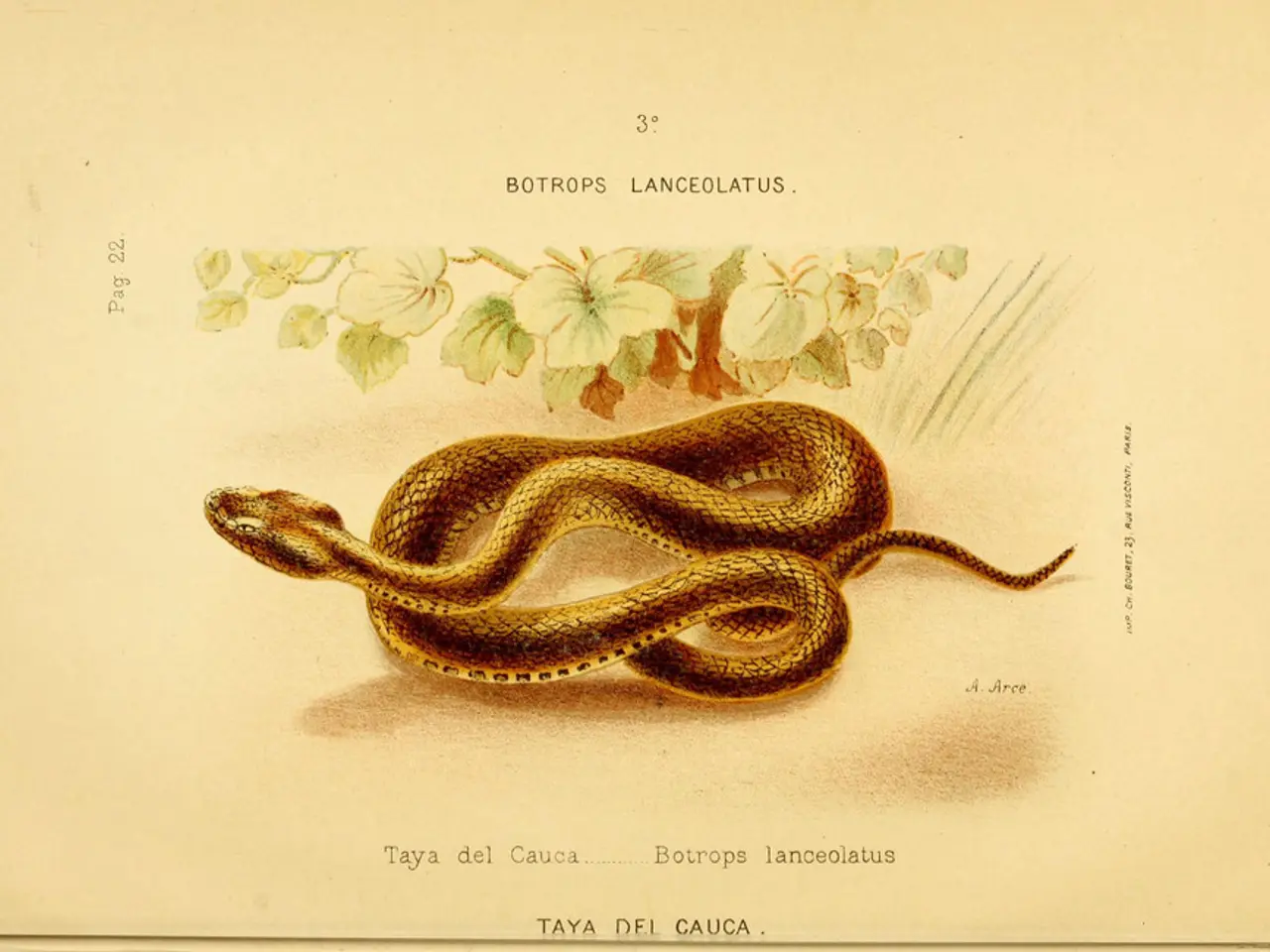Ancient Symbolism of Snakes: Uncovering the Presence of Snake Imagery in Every Old civilization
In various corners of the world, snakes have long been venerated and imbued with profound symbolism. From ancient Egypt to India, Mesoamerica, and Australia, these slithering creatures have universally embodied concepts such as healing, rebirth, wisdom, transformation, fertility, and the connection between the earthly and the divine [1][3][5].
In ancient Greece, serpents were associated with Asclepius, the god of healing, where the serpent-entwined rod symbolized medicine and renewal [1]. Similarly, in Mesoamerica, the Feathered Serpent deity (Quetzalcóatl) blended serpent and bird traits to signify fertility, celestial power, and wisdom [3]. In India, snakes are still revered today as Nagas, symbolizing both danger and divine wisdom [1].
Anthropologists propose that the natural behaviors of snakes, such as shedding skin (symbolizing renewal), venom (linked to both danger and healing), and their liminal movement between the earth and hidden places, made them universally symbolic, especially in agricultural societies [2]. Jung argued that humans instinctively associate snakes with rebirth, transformation, and immortality [4].
These shared symbols emerge independently in disparate societies because of snakes’ universal biological and ecological characteristics that lend themselves to spiritual and mythological interpretation tied to fundamental human concerns about life, death, healing, and transformation [5]. For instance, in Egypt, the cobra goddess Wadjet was considered the personal protector of the pharaoh, with her image appearing on crowns dating back to around 3100 BCE [1].
In pre-Columbian Mesoamerica, the Aztecs worshipped Quetzalcoatl, the Feathered Serpent, a god of wind, learning, and creation [3]. In Aboriginal Australia, stories of the Rainbow Serpent stretch back tens of thousands of years [1]. In the Kimberley region of Western Australia, rock paintings depict enormous serpentine figures that may be over 20,000 years old [1].
The presence of early serpent imagery, such as at Göbekli Tepe in southeastern Turkey, dating back nearly 11,000 years, suggests that this symbol may have roots far deeper than organized religion or state power [6]. At Chichen Itza, during the equinoxes, a moving shadow along the steps of the main pyramid forms the shape of a descending serpent, honouring Quetzalcoatl [7].
Joseph Campbell, in his book "The Hero with a Thousand Faces", noted that serpents often played key roles in the hero's journey [4]. Carl Gustav Jung believed that serpent imagery represents a universal archetype [4]. The Rosetta Stone, discovered in 1799, unlocked the understanding of ancient Egyptian hieroglyphs [8].
These timeless symbols continue to captivate and inspire us, reminding us of our shared human experiences and the universal themes that connect us across cultures and millennia.
References:
[1] https://www.britannica.com/topic/snake-symbolism [2] https://www.ncbi.nlm.nih.gov/pmc/articles/PMC1820179/ [3] https://www.britannica.com/topic/Quetzalcoatl [4] https://www.psychologytoday.com/us/blog/carl-jung-letter/201608/the-snake-as-archetype [5] https://www.ncbi.nlm.nih.gov/pmc/articles/PMC5641760/ [6] https://www.archaeology.org/issues/655-1813/features/gobekli-tepe-carving [7] https://www.britannica.com/topic/Chichen-Itza [8] https://www.britannica.com/topic/Rosetta-Stone
- The rich history of pyramids, like those at Chichen Itza, often feature serpent imagery, such as the equinox shadow forming a descending serpent, symbolizing Quetzalcoatl, the god of wind, learning, and creation in ancient Mesoamerican mythology [7].
- In addition to the spiritual symbolism, snakes are also deeply embedded in global cuisines, as seen in the use of snake meat in various dishes across Africa, Asia, and South America, connecting different cultures through their shared appreciation for food and drink [10].
- Travelers today can immerse themselves in the lifestyle, fashion-and-beauty, and food-and-drink experiences of different cultures, such as trying local delicacies that might include snake meat, while learning about the mythologies, history, and beliefs associated with these animals [11].
- The symbolic nature of snakes extends beyond mythology and history, influencing modern fashion, with designers like Alexander McQueen incorporating serpent imagery in their collections to represent transformation, rebirth, and immortality [12].
- Similarly, a growing interest in cultural-travel has led to a resurgence of ancient crafting techniques, such as the intricate pottery traditions of ancient civilizations like the Indus Valley or the Mesopotamian cultures that depict serpents in their artistic expressions [13].




